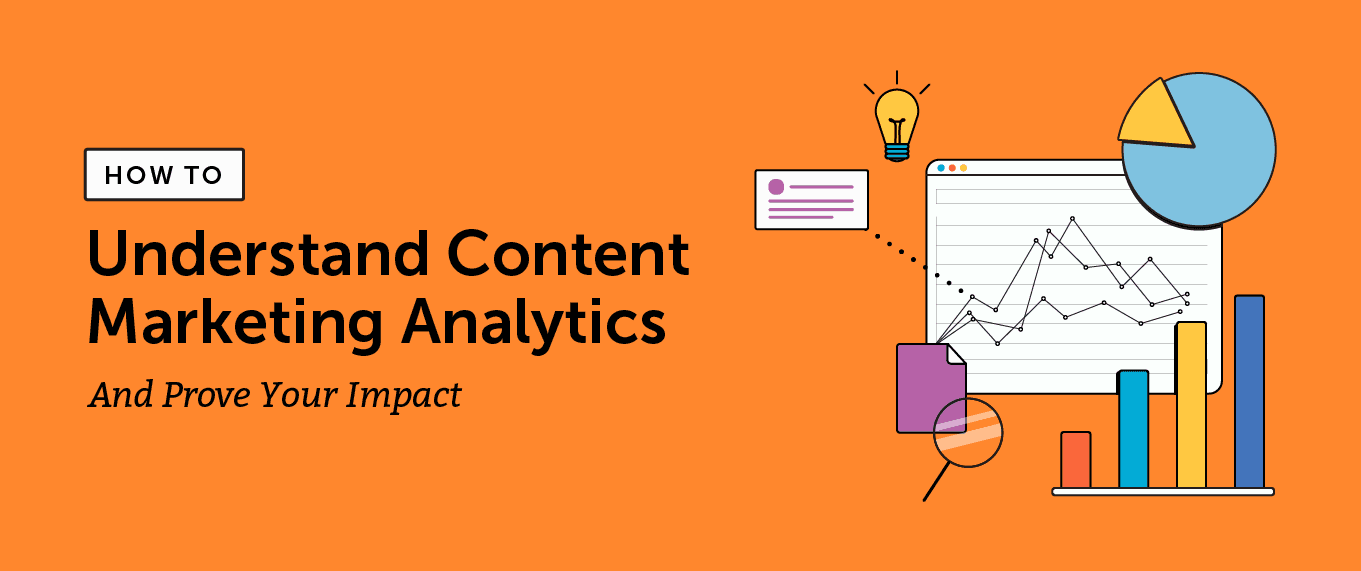To prove content marketing success, track key performance indicators (KPIs) such as website traffic, lead generation, and conversion rates. Analyzing these metrics reveals the effectiveness of your content strategy.
Content marketing is essential for building brand awareness and engaging audiences. It focuses on creating valuable content that meets customer needs. Successful campaigns drive traffic, generate leads, and increase conversions. Understanding the metrics that define success helps businesses refine their strategies.
By focusing on KPIs like engagement rates and social shares, marketers can identify what resonates with their audience. This data-driven approach leads to continuous improvement and more effective content. Ultimately, proving content marketing success involves a clear alignment of content goals with measurable outcomes.
The Importance Of Measuring Content Marketing Success
Measuring content marketing success is very important. It helps businesses understand what works. Content plays a major role in digital marketing. It attracts customers and builds trust. Without measurement, it’s hard to know if efforts pay off.
Tracking key metrics allows for better decision-making. Businesses can see which content drives traffic. Understanding ROI helps to optimize future campaigns. Analytics provide insights into audience behavior and preferences.
Focusing on metrics makes marketing efforts more effective. It helps teams create content that resonates. Engagement, shares, and leads are crucial indicators of success. Investing time in measurement pays off in the long run.
Setting The Stage: Content Marketing Objectives
Start by clearly defining your business goals. This helps focus your efforts. Goals might include increasing brand awareness, generating leads, or boosting sales. Each goal should be specific and measurable.
Align your content strategy with these objectives. Create content that speaks to your target audience. This ensures relevance and engagement. Use different formats like blogs, videos, and infographics. Each format can help achieve your goals.
| Business Goal | Content Type |
|---|---|
| Increase Brand Awareness | Social Media Posts, Blogs |
| Generate Leads | Whitepapers, Webinars |
| Boost Sales | Product Videos, Email Campaigns |
Key Metrics To Track Content Performance
Tracking traffic metrics helps assess how many people visit your content. This includes page views, unique visitors, and referral sources. Each of these metrics shows how well your content reaches the audience.
Engagement metrics show how people interact with your content. Key metrics include time on page, bounce rate, and social shares. Higher engagement means your content is interesting and valuable to readers.
| Traffic Metrics | Description |
|---|---|
| Page Views | Total number of times a page is viewed. |
| Unique Visitors | Count of individual users visiting your content. |
| Referral Sources | Websites or platforms sending traffic to your content. |
| Engagement Metrics | Description |
|---|---|
| Time on Page | Average time users spend on your content. |
| Bounce Rate | Percentage of users leaving after viewing one page. |
| Social Shares | Number of times content is shared on social media. |

Credit: crystalclearcomms.com
Understanding Conversion Metrics
Tracking leads and sales from content is crucial for success. Use tools like Google Analytics to monitor visitor behavior. Focus on how many visitors convert into customers. This helps measure the effectiveness of your content.
Conversion rates show the percentage of visitors who take action. A high conversion rate indicates strong content that engages users. Analyze which content drives the most sales. This insight helps improve future marketing strategies.
Understanding these metrics leads to better decision-making. Regularly review your performance to identify trends. Adjust your content based on what works best for your audience.
Seo Success Indicators
Rankings are a key measure of content effectiveness. High rankings mean more visibility. This leads to more visitors.
Search engines rank content based on quality and relevance. Using the right keywords helps improve rankings.
Backlinks are also important. They show that other sites trust your content. More backlinks can increase your domain authority.
A higher domain authority means better chances of ranking well. Focus on creating great content to earn more backlinks.
Social Media Metrics For Content Analysis
Social shares and likes are key indicators of content performance. They show how much your audience enjoys your content. More shares lead to wider reach and visibility.
Measuring these metrics helps understand audience engagement. A high number of likes suggests strong approval from followers. Tracking these numbers helps refine future content strategies.
Comments and social interactions also provide valuable insights. They reflect the audience’s thoughts and feelings. Engaging with users in comments builds community and loyalty.
Analyzing these interactions can reveal trends and preferences. This information guides content creation that resonates with your audience. Overall, these metrics are essential for successful content marketing.
Evaluating Content Quality Through User Behavior
Evaluating content quality is key to understanding user behavior. Time on page shows how long users stay engaged. A longer time often indicates valuable content. Bounce rates reveal how many users leave quickly. A high bounce rate means people are not finding what they want.
User feedback is also essential. Comments and ratings provide direct insights. Updating content based on user input keeps it fresh and relevant. Regular updates can improve engagement and reduce bounce rates. Monitoring these metrics helps in refining content strategy.
Calculating Roi Of Content Marketing
To calculate ROI for content marketing, use the formula: (Net Profit / Cost of Investment) x 100. This formula shows how much profit comes from your content efforts.
Interpreting the ROI results helps understand your content’s value. A positive ROI means your content brings in more money than it costs. A negative ROI indicates a need for changes in strategy or approach.
Here’s a simple breakdown of ROI interpretation:
| ROI Result | Interpretation |
|---|---|
| Positive | Content is effective and profitable. |
| Negative | Content is not performing well; reevaluate strategy. |
| Break-even | Content costs match profits; consider new tactics. |
Leveraging Analytics Tools For Measurement
Content marketers use various analytics tools to measure success. These tools help track important metrics. Popular options include:
- Google Analytics – Tracks website traffic and user behavior.
- SEMrush – Offers insights on SEO and content performance.
- BuzzSumo – Analyzes content engagement across social media.
- HubSpot – Provides marketing, sales, and service analytics.
Custom reports and dashboards help uncover valuable insights. Marketers can create reports tailored to their needs. These reports highlight key performance indicators (KPIs). Understanding KPIs allows for better decision-making.
Using these tools ensures a deeper understanding of content effectiveness. Marketers can refine strategies based on solid data.

Credit: coschedule.com
Reporting And Communicating Success To Stakeholders
Creating effective reports is key for showing content marketing success. Reports should be clear and simple. Use visuals like charts and graphs to make data easier to understand.
Storytelling with data helps engage stakeholders. Start with a strong narrative that highlights key points. Use examples and case studies to make data relatable. Keep the focus on how content marketing impacts business goals.
| Element | Importance |
|---|---|
| Visuals | Make data easier to grasp |
| Narrative | Engages and connects with audience |
| Examples | Show real-world impact |
Challenges In Measuring Content Marketing Success
Measuring content marketing success can be quite challenging. One big issue is the complexity of attribution modeling. This model helps businesses understand which content drives results. Often, multiple channels contribute to a single sale. This makes it hard to pinpoint what works best.
Another challenge lies in overcoming data analysis hurdles. Many businesses struggle with gathering and interpreting data. Without the right tools, insights can remain hidden. Using simple metrics like engagement rates and conversion rates can help. These metrics provide a clearer picture of success.
Regularly reviewing data helps teams adjust strategies quickly. This can lead to better content performance and higher ROI. Understanding these challenges is key to improving content marketing efforts.
Continuous Improvement Through Data-driven Strategy
Data plays a vital role in content optimization. By analyzing user behavior, you can improve your content. Metrics like click-through rates and bounce rates help identify what works best.
Adjusting strategy based on performance is crucial. Look for patterns in data to find popular topics. Use this information to create more engaging content. Regular updates keep your audience interested and informed.
| Metric | Importance |
|---|---|
| Click-Through Rate | Indicates how many users engage with your content. |
| Bounce Rate | Shows how many visitors leave quickly. |
| Time on Page | Measures how long users stay on your content. |

Credit: swzd.com
Frequently Asked Questions
How Do I Measure Content Marketing Success?
To measure content marketing success, track key metrics like website traffic, engagement rates, and conversion rates. Use tools like Google Analytics to analyze user behavior. Additionally, monitor social media interactions and email open rates. Combining these metrics provides a comprehensive view of your content’s effectiveness.
What Are The Key Metrics For Content Marketing?
Key metrics include traffic, engagement, lead generation, and conversions. Traffic indicates how many visitors access your content. Engagement measures user interaction, such as comments and shares. Lead generation tracks potential customers, while conversions show how many users completed desired actions.
Together, these metrics reveal content performance.
Why Is Roi Important In Content Marketing?
ROI is crucial in content marketing as it measures the profitability of your efforts. A positive ROI indicates that your content strategies yield financial returns. It helps justify marketing expenditures and guides future investments. Understanding ROI enables businesses to optimize their content for maximum effectiveness and growth.
How Often Should I Analyze Content Performance?
You should analyze content performance at least monthly. Regular analysis helps identify trends and optimize strategies quickly. It allows you to adjust your content based on audience preferences. By monitoring performance consistently, you can ensure your content remains relevant and effective in achieving your marketing goals.
Conclusion
Measuring content marketing success is crucial for growth. Use clear metrics to track your progress. Focus on engagement, conversions, and audience feedback. Adjust your strategies based on data insights. This approach ensures your content remains relevant and impactful. Ultimately, successful content marketing drives brand loyalty and increases your bottom line.



